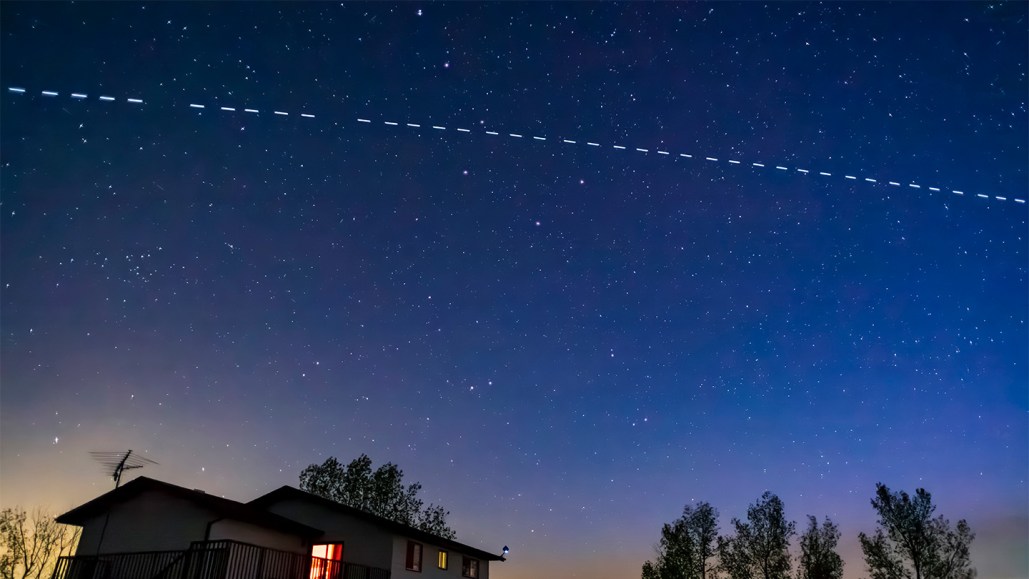Starlink satellites’ leaky radio waves obscure the cosmos
Their unintentional emissions are about 10 million times brighter than natural sources

Unintentional radio emissions from Starlink satellites (a group of which are shown here crossing the sky) threaten radio astronomy, a new study suggests.
Alan Dyer/Stocktrek Images/Getty Images